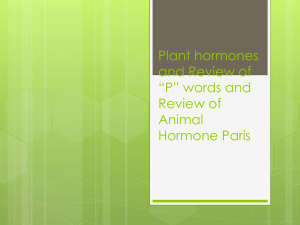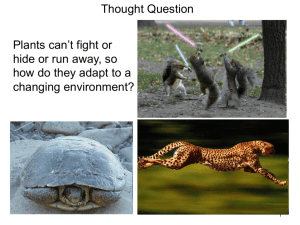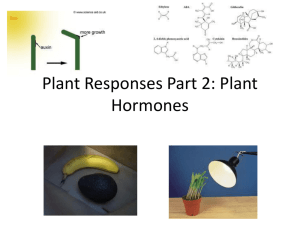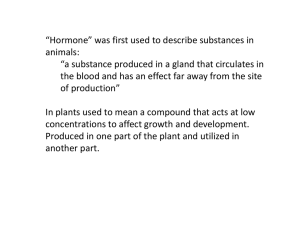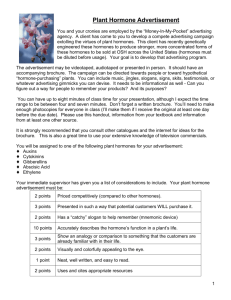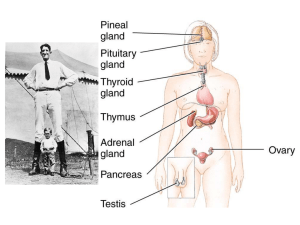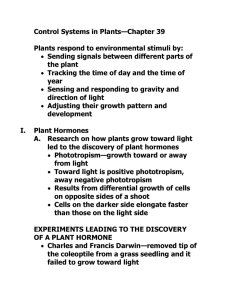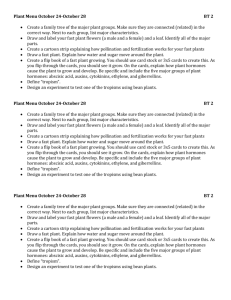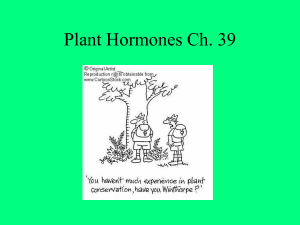Chapter 39: Plant Responses to Internal and External Signals
advertisement
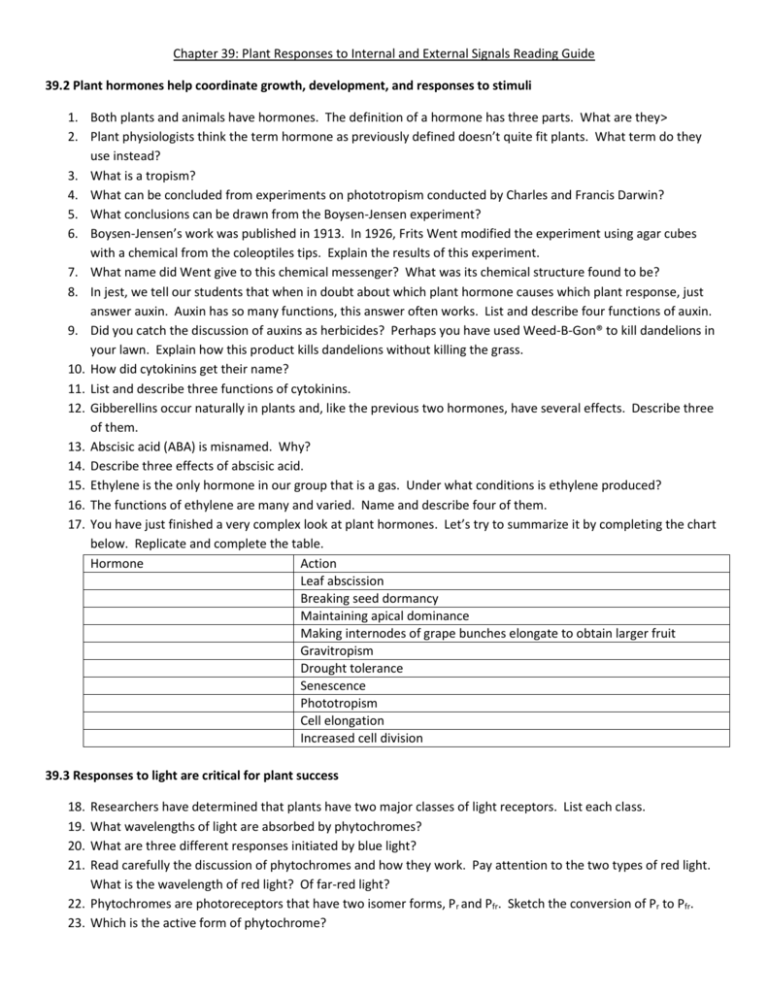
Chapter 39: Plant Responses to Internal and External Signals Reading Guide 39.2 Plant hormones help coordinate growth, development, and responses to stimuli 1. Both plants and animals have hormones. The definition of a hormone has three parts. What are they> 2. Plant physiologists think the term hormone as previously defined doesn’t quite fit plants. What term do they use instead? 3. What is a tropism? 4. What can be concluded from experiments on phototropism conducted by Charles and Francis Darwin? 5. What conclusions can be drawn from the Boysen-Jensen experiment? 6. Boysen-Jensen’s work was published in 1913. In 1926, Frits Went modified the experiment using agar cubes with a chemical from the coleoptiles tips. Explain the results of this experiment. 7. What name did Went give to this chemical messenger? What was its chemical structure found to be? 8. In jest, we tell our students that when in doubt about which plant hormone causes which plant response, just answer auxin. Auxin has so many functions, this answer often works. List and describe four functions of auxin. 9. Did you catch the discussion of auxins as herbicides? Perhaps you have used Weed-B-Gon® to kill dandelions in your lawn. Explain how this product kills dandelions without killing the grass. 10. How did cytokinins get their name? 11. List and describe three functions of cytokinins. 12. Gibberellins occur naturally in plants and, like the previous two hormones, have several effects. Describe three of them. 13. Abscisic acid (ABA) is misnamed. Why? 14. Describe three effects of abscisic acid. 15. Ethylene is the only hormone in our group that is a gas. Under what conditions is ethylene produced? 16. The functions of ethylene are many and varied. Name and describe four of them. 17. You have just finished a very complex look at plant hormones. Let’s try to summarize it by completing the chart below. Replicate and complete the table. Hormone Action Leaf abscission Breaking seed dormancy Maintaining apical dominance Making internodes of grape bunches elongate to obtain larger fruit Gravitropism Drought tolerance Senescence Phototropism Cell elongation Increased cell division 39.3 Responses to light are critical for plant success 18. 19. 20. 21. Researchers have determined that plants have two major classes of light receptors. List each class. What wavelengths of light are absorbed by phytochromes? What are three different responses initiated by blue light? Read carefully the discussion of phytochromes and how they work. Pay attention to the two types of red light. What is the wavelength of red light? Of far-red light? 22. Phytochromes are photoreceptors that have two isomer forms, Pr and Pfr. Sketch the conversion of Pr to Pfr. 23. Which is the active form of phytochrome? 24. Look again at the effect of light exposure on lettuce seed germination. What is the role of red and far-red light in determining the see’s response? 25. To make sense of all this, you will want to read carefully the Phytochromes and Shade Avoidance section. Which type of red light is more common in a shaded area? Why? 26. What is a circadian rhythm? Give one plant example and one human example. 27. What is the photoperiod? 28. Plants detect photoperiod, and in many species it affects their time of flowering. Explain each of the following, and give an example of a plant that is in the group: (A) short-day plant, (B) long-day plant, and (C) day-neutral plant. 29. The plant in Figure 39.22 is a short-day plant. Draw and label R, FR, and critical dark period. For each line, explain why flowering occurs or does not occur. 30. What is florigen? 39.5 Plants respond to attacks by herbivores and pathogens 31. What are the two ways in which plants combat excess herbivory? 32. Describe two examples of a plant producing chemicals to deal with herbivory.
